What is the recommended tire pressure for the VW ID.4?
We're an affiliate
We hope you love the products we recommend! Just so you know, we may collect a share of sales or other compensation from the links on this page. Thank you if you use our links, we really appreciate it!
Table of Contents
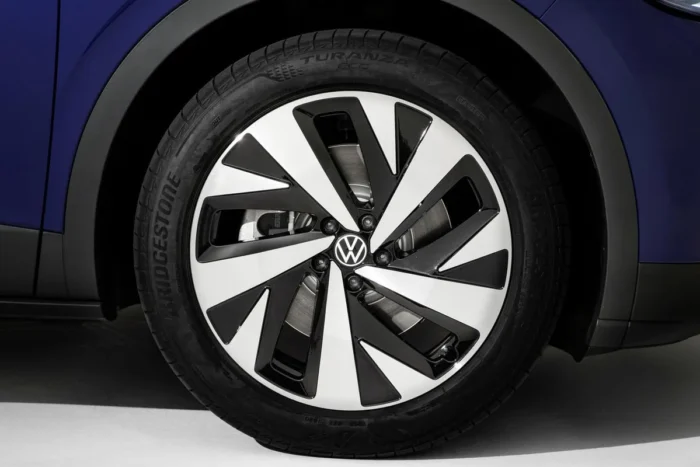
As a legal requirement, all new EU and North American cars must have a tire pressure monitoring system, otherwise known as TPMS. These systems alert us when tire pressures are not at an optimal level.
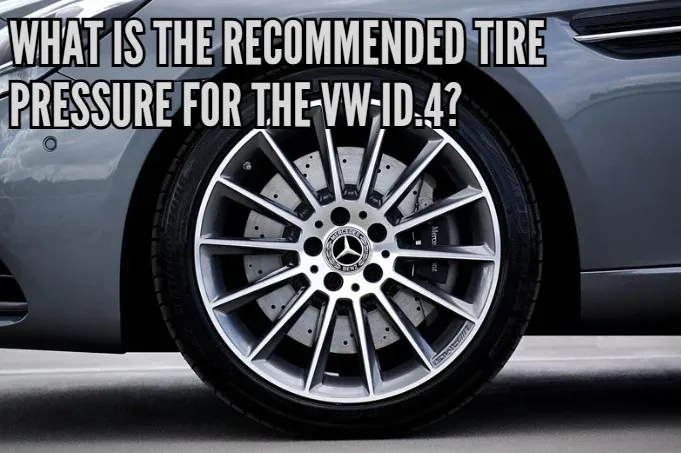
However, pumping air to ensure tires are at the recommended pressure is still the driver’s responsibility. But how do you know the recommended tire pressure on your VW ID.4? And why is it important? Read this blog alongside your owner’s manual to find out!
Table of Contents
Why is VW ID.4 tire pressure important?
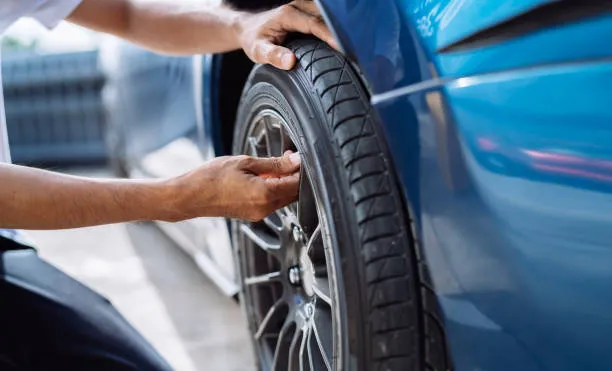
Proper tire inflation not only improves fuel efficiency and vehicle handling but also increases the life of the tires and enhances road safety. Under-inflated tires cause poor handling, reduced fuel economy, and increased wear on the tires and suspension.
Over-inflated tires result in a harsh ride, decreased traction, and increased vulnerability to punctures. This is why ensuring your VW ID.4 tire pressure is at the correct level is critical before you start driving.
Recommended tire pressure for VW ID.4
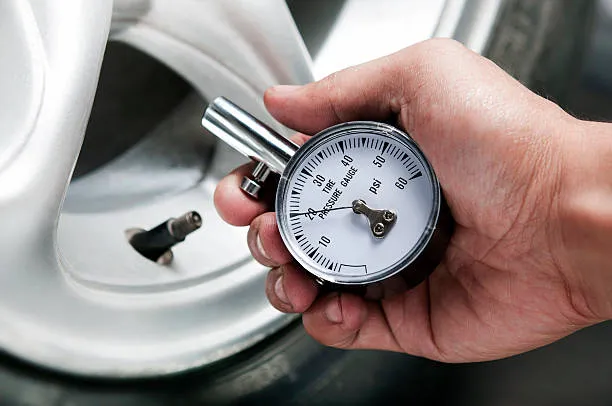
The recommended VW ID.4 tire pressure can be found in the owner’s manual or on a sticker located either on the driver door pillar or inside the charging socket flap. The sticker provides the correct tire pressure for approved tires and may include additional tire sizes.
The appearance of the sticker may differ between vehicles, but it is a crucial source of information for maintaining proper tire pressure.
Checking your VW ID.4 tire pressure
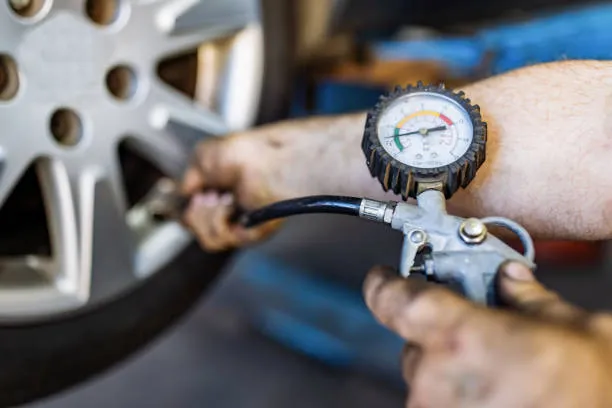
The VW ID.4 has a tire pressure monitoring system. This gives you peace of mind that the system will alert you if you start to lose any pressure in any tire. However, at some point, you may be required to manually check your tire pressures.
Below is a brief summary of how Volkswagen recommends this is done in the owner’s manual:
- Ensure your tires are cold.
- This is usually best done before any journey has been made in the day.
- Unscrew the valve caps and attach the tire pressure gauge.
- NOTICE: When attaching the tire pressure gauge, ensure that you do not position it at an angle to the valve stem. This can damage the tire valve.
- Compare the tire’s pressure to the recommended pressure for your specific model and load.
- Adjust your tire pressure based on the load level.
- After adjusting your tire pressure, always replace the valve caps.
It’s essential to check the tire pressure regularly, especially before long trips, as tire pressure can fluctuate due to changes in temperature and tire wear. Always remember that warm tires have a higher pressure than cold tires, so never let air out of warm tires. Wait until they’re cool.
Finally, even if specified on the sticker or inside the charging cap, never exceed the maximum tire pressure listed on the sidewall of the tire. If the limit listed on the tire sidewall is less than that recommended by your car, it’s unsafe to drive on! Get a new tire immediately!
The effects of wrong ID.4 tire pressure
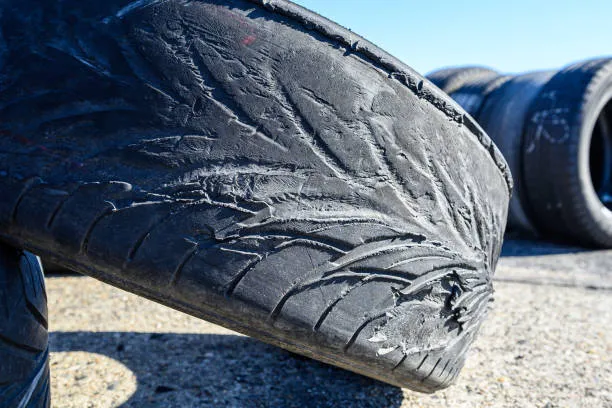
Having incorrect tire pressure can have a significant impact on both your driving experience and the safety of your vehicle. Under-inflated tires can lead to handling problems, lower gas mileage, quicker tire wear, and added stress on your vehicle’s suspension.
On the flip side, over-inflated tires can result in a bumpy ride, decreased traction, and a greater risk of punctures. Properly inflating your tires not only enhances your driving experience but also extends the life of your tires and saves you money at the pump.
Remember to check and adjust your tire pressure for a safer and smoother ride.
VW ID.4 tire pressures: conclusion
In conclusion, maintaining the correct tire pressure is essential for optimal performance, safety, and a longer vehicle lifespan. Regular checks and adjustments to your VW ID.4 tire pressure will ensure a better driving experience.
Don’t neglect the importance of proper tire inflation – it’s a simple and easy way to keep your VW ID.4 running smoothly.
Remember to consult the owner’s manual or the driver’s door sill label for the recommended tire pressure for your specific model. You can find a copy of the owner’s manual below.

FAQs
What is the tire pressure for VW ID.4?
The recommended tire pressure for a VW ID.4 can vary depending on the specific model and tire size. Typically, the recommended tire pressure falls within the range of 32 to 38 psi (pounds per square inch). To find the exact tire pressure for your specific VW ID.4, consult the owner’s manual or look for the tire pressure information on the driver’s side door jamb or the placard located in the glovebox.
What psi should Volkswagen tires be?
The recommended tire pressure for Volkswagen vehicles can vary depending on the model, trim level, and tire size. In general, Volkswagen recommends tire pressures within the range of 32 to 38 psi. For the precise tire pressure recommendations for your specific Volkswagen model, consult the owner’s manual or refer to the information provided on the driver’s side door jamb or the glovebox placard.
What tires come on a VW ID.4?
The specific tires that come with a VW ID.4 may vary depending on the trim level and regional availability. Volkswagen often uses a variety of tire manufacturers, and the tire models can change over time. To determine the exact tires that come with your VW ID.4, it is best to check with the dealership or refer to the owner’s manual for your specific model.
Should I charge my ID.4 every night?
The frequency of charging your VW ID.4 depends on your driving habits and daily needs. You do not necessarily need to charge it every night unless your daily driving requirements consistently deplete the battery to a level where charging is necessary. Modern electric vehicles, including the VW ID.4, are designed to manage their battery charging intelligently.
Categorised in: Advice, Automotive, Reviews





